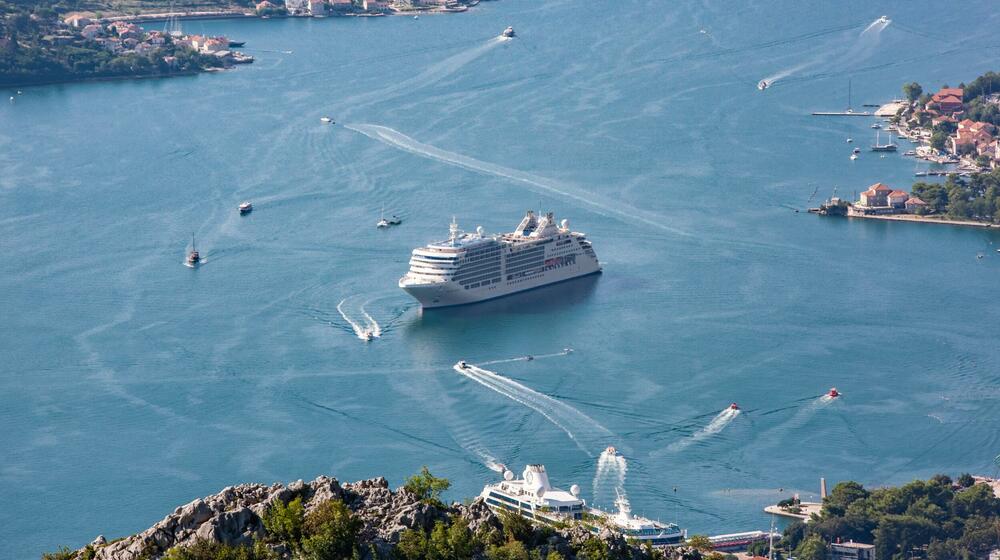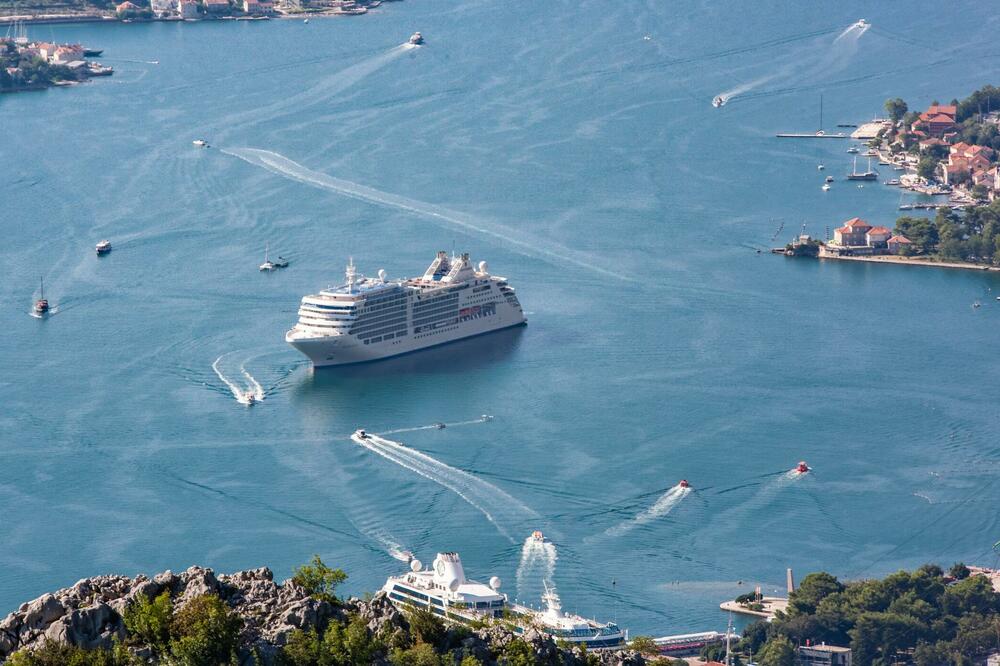Sulfur dioxide (SO2), one of the main pollutants from cruise ships, is especially harmful to stone structures, which are the main feature of Kotor's architecture and cultural heritage of this unique area.
The area of Kotor, which has been under the protection of the United Nations Educational, Scientific and Cultural Organization (UNESCO) since 1979, hosted about 4.800 ships from the restoration of independence until the end of last year, from which more than four million passengers arrived.
"We are witnessing thick smoke rising over the bay as cruise ships sail into it. Sulfur is one of the ingredients of this smoke. "Cruisers mostly use fuel that is of poor quality, with a high percentage of sulfur," he claimed in an interview with Center for Investigative Journalism of Montenegro (CIN-CG) conservator-restorer of the Center for Conservation and Archaeology Jasminka Grgurević.
For this tourist season, a large number of cruise ships in the bay is being announced triumphantly, and few people think about the consequences these mega ships leave on the protected area.
CIN-CG experts point out that cruise ships emit large amounts of various toxic particles and gases, but that sulfur is particularly harmful to stone structures, because in contact with the atmosphere, sulfuric acid and acid rain occur.
The Center for Conservation and Archeology (CKA) points out that acid rain has the most harmful effect on all materials of architectural heritage, especially in areas where rainfall is frequent and if they are located near salt water, as is the case with Kotor. Sulfur accelerates the decomposition of stone.
In the presence of prolonged humidity, the limestone material under the influence of sulfur turns into a so-called gypsum stone, which during crystallization significantly increases its volume and thus causes internal stresses and destruction of the stone.
Grgurević explains that for construction in the protected area throughout history, the local limestone was used to the greatest extent, as well as different types of imported stone.
"Stone is often delivered by ship from Korčula, Brac or Venice quarries. Imported stone was used to make decorative elements on the facades, and sometimes the facades as a whole were covered," Grgurević told CIN-CG.
He states that the facades of some of the most impressive buildings in the area of Kotor are made of Korčula stone - the Church of the Virgin Mary in Prčanje, the front facades of the Church of St. Eustatius in Dobrota and the Church of the Help of Christians in Mul.
The so-called are particularly exposed to the harmful effects of sulfur. soft types of stone, for example limestone, which is used to build a large number of buildings in the area of Kotor, including the city ramparts.
"It is possible that these effects of sulfur are not visible optically today, or due to ignorance of the matter they are interpreted as mechanical damage to the stone, but it is indisputable that they exist and can cause long-term and serious 'diseases' in the stone," said Grgurević.
He reminds that research conducted in Paris in the 1960s showed that an increased percentage of sulfur in the air stays on the stone and changes its surface, turning it into calcium sulfate by about 50 percent, and that it simultaneously penetrates into the depth of the stone.
In addition to sulfur, carbon dioxide and nitrogen, which are also emitted by cruise ships, cause damage.
"Investigations of the impact of gases emitted by cruise ships in the bay on cultural assets and the area have not been done," says Grgurević and points out that due to the large number of ships, monitoring and protection against negative impacts would be necessary.
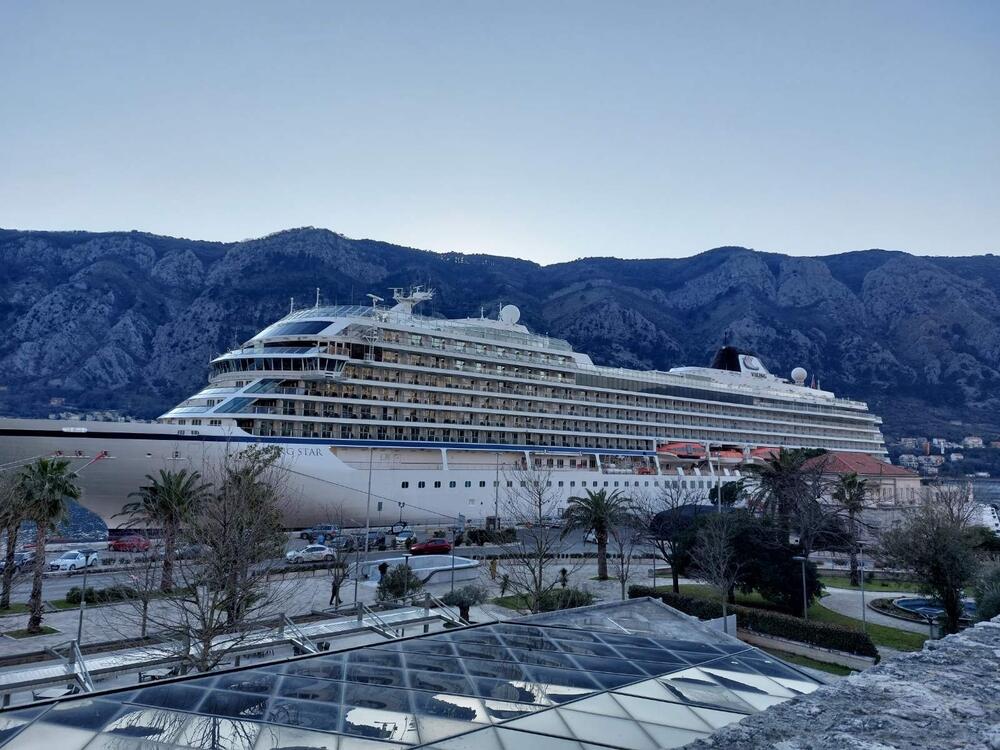
Switch to higher quality fuel
Experts agree that cruisers should switch to higher-quality fuel, with less sulfur, because it reduces other particles as well.
Professor of the Maritime Faculty Danilo Nikolic explains that sulfur dioxide is found in gases as a result of burning fossil fuels. He points out that the solution would be to reduce the flow of both road and sea transport, but also that it is important to clean buildings of bacteria that affect the decomposition of stone.
"There are also new technologies that could significantly protect the decomposition of limestone and the destruction of buildings," says Nikolić.
Professor from the American Johns Hopkins University, Ryan David Kennedy, for CIN-CG also points out that buildings can be affected by acids that have been fueled by pollution.
"Heavy fuel oils (HFO) have a high sulfur content and this is a cause for concern. Pollutants such as sulfur dioxide are very damaging to infrastructure. "Cleaner fuels can reduce air pollution problems and adverse effects on buildings," Kennedy said, noting that he measured suspended PM particles on the decks of cruise ships, but not the amount of sulfur dioxide.
Along with smoke and fog, sulfur dioxide is the main cause of "smog", which, in addition to having a harmful effect on plants and people, also has a corrosive effect on construction materials, stone, concrete, and iron. Because of this, black deposits often form on cultural monuments.
"The problem is the corrosive effect on construction materials, as well as roof coverings, especially if they are made of metal alloys, and they can have extremely large consequences on immovable cultural heritage," the Center for Conservation and Archeology told CIN-CG.
Director of the Kotor branch of the Center for Conservation and Archaeology Boris Kustudić for CIN-CG, he emphasizes that we do not have research on the impact of cruise ships on buildings, but that they examined Kotor's ramparts, which, he points out, are completely neglected, have many cracks and he confirms that they were primarily affected by acid rain and lichen. He points out that it is necessary to regularly maintain the Kotor ramparts and properly valorize them, because, as he assessed, this has been done unprofessionally and in a layman's way until now.
The measuring station in Kotor was installed just before the pandemic
According to all international research, a much larger amount of sulfur is emitted from cruise ships than from vehicles.
"The cruise ship MS Rotterdam emits the same amount of sulfur in three months as 12 million cars do in a year," according to an analysis by Cruise Market Watch, a site that researches cruise ships.
Although international studies have shown that cruise ships are considered one of the biggest polluters, Kotor is probably the only European port for passenger ships where, according to official data, the air is of excellent quality.
This is most likely due to the fact that, according to research by CIN-CG, the only measuring station of the Environmental Protection Agency (EPA) in that city was installed only a few months before the outbreak of the coronavirus pandemic, which, among other things, led to the suspension of cruise tourism.
This year's season in Kotor started at the end of February, when the cruiser "Bolette" sailed into the bay. Then the equipment recently installed by the Center for Research, Innovation and Entrepreneurship (CIIP) at the Maritime Faculty recorded a drastic increase in harmful PM2.5 and PM10 particles.
Professor Nikolić, who heads the CIIP, points out that it is necessary to control what types of fuel are burned when the cruise ship is anchored. It would also be good to reduce the maximum number of cruisers per day, but also to transfer some cruisers to the port of Zelenika.
CIIP of the Maritime Faculty made an assessment of the emission of harmful gases and particles from cruise ships in the bay for the year 2015. According to that estimate, almost eight tons of sulfur dioxide could have been emitted in the light, and over 418 tons in the heavy fuel used by cruisers.
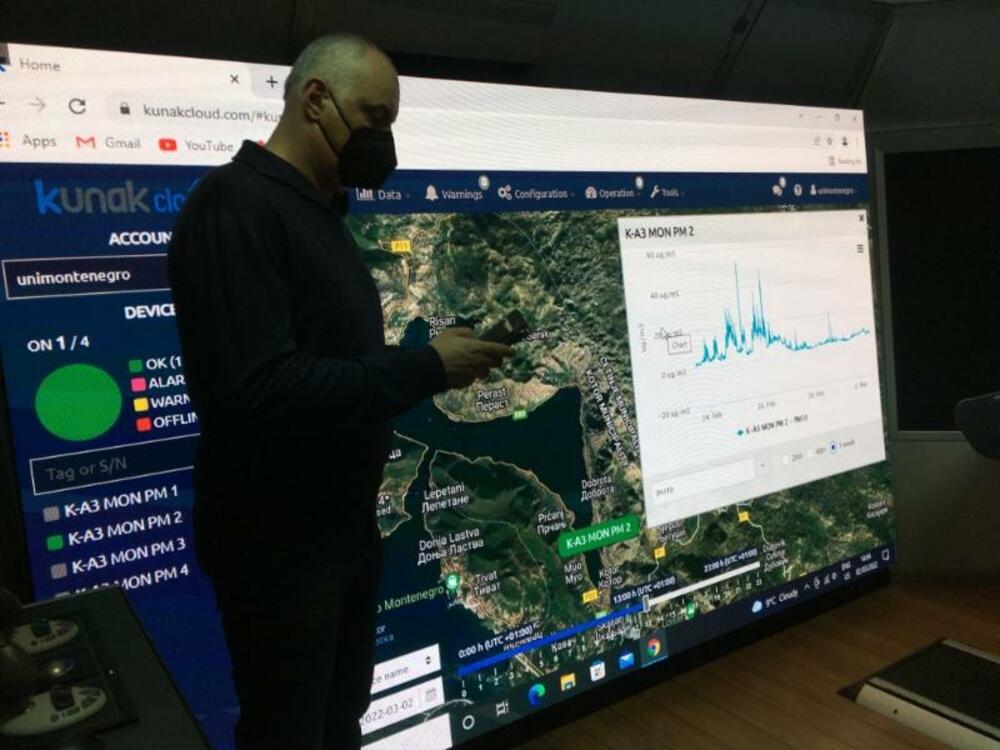
The situation should be clearer in the middle of the year, when, in addition to the EPA measuring station, four CIIP measuring stations will be installed in different parts of the bay.
"Using the device, we will try to establish the trend of pollutants in the air with the arrival and departure of cruise ships," explains Nikolić for CIN-CG.
Several cruise ships can dock at the same time in the bay. The main berth is near the Old Town. There are three more anchorages - one across from Port of Kotor, another in front of the Maritime Faculty, and the third in Ljutoja. During the day, according to unofficial information, four ships each entered Kotor.
Professor Nikolić explains that one should see which of those positions leaves the least particles in the bay.
"Perhaps they should anchor in the Tivat Bay, and then bring passengers to Kotor by electric vessels. Buses are not the solution, they will pollute the environment again", says the professor.
20 times more pollution from ships than in a busy street
Representatives of the Maritime Faculty of Kotor and Split calculated that in 2018, cruise ships in Boka, among other things, emitted 63,9 tons of sulfur dioxide and 62,4 tons of PM particles, according to research published in the scientific journal "ToMS".
The German NGO Nature and Biodiversity Conservation Union (NABU) secretly measured that on the deck of a passenger ship the concentration of dangerous particles is 20 times higher than in a busy street and 200 times higher than in clean air.
At the beginning of 2019, Professor Kennedy published the report "Investigation of air pollution on deck of four cruise ships". The research showed that "concentrations of PM particles on the deck of these ships are comparable to concentrations measured in polluted cities, including Beijing and Santiago". The Chinese and Chilean capitals are generally at the top of the list of the most polluted cities in the world. For at least one year, the ship of the "Carnival" company sailed in Kotor, whose cruisers were interrogated by Kennedy.
Kennedy, speaking to CIN-CG, states that it would be ideal for cruisers not to be powered by fossil fuels, and that one of the ways to improve the situation is to switch to cleaner fuels and install filters on cruisers.
Back in March 2013, Montenegro confirmed Annex 6 of the MARPOL Convention, which limits the emission of pollutants from ships, including cruise ships. In European ports, the permitted measure for the amount of sulfur in fuel is 0,1 percent.
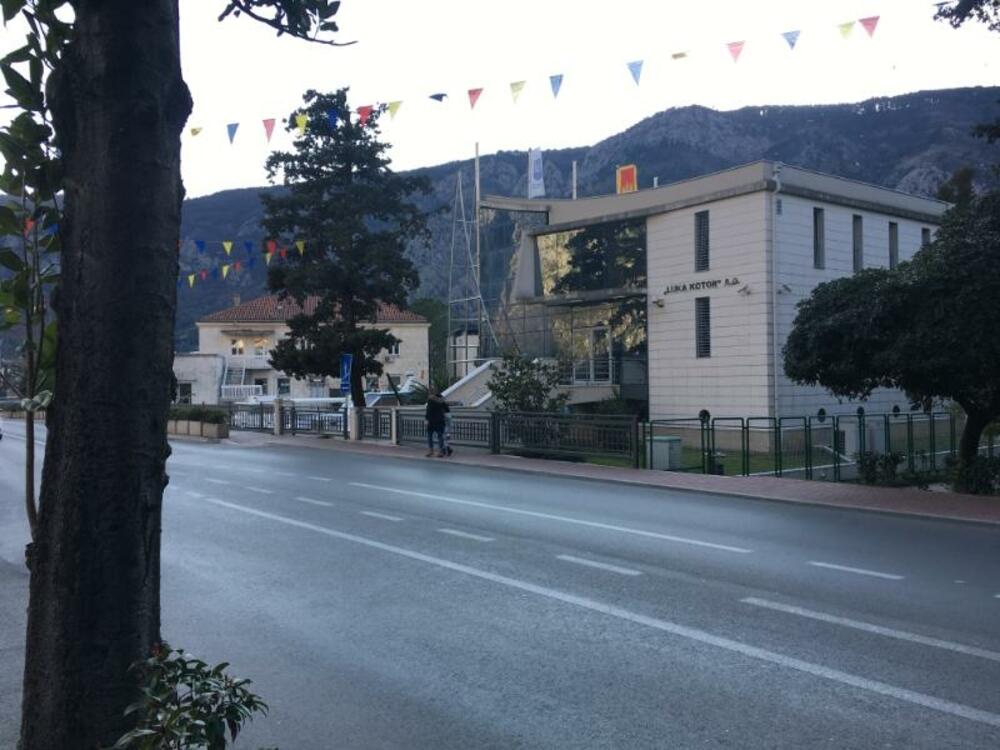
Inspector of the Navigation Safety Inspection Željko Lompar told CIN-CG that they were checking the tanks on the ships.
"Before the ship arrives, but also at the announcement of departure, it is obliged to send the quantity of each fuel per tank to the inspection. By comparing the two conditions, it is easy to determine which ship used fuel in the port of Kotor", he stated.
He adds that the inspection found irregularities only when "obvious black smoke came out as an increased emission of carbon dioxide", but that they did not impose fines, because it was about errors in devices (boilers or generators).
He explains that sulfur measurements in fuel are carried out by laboratories and by the inspector if he suspects fuel quality.
"We have not had such cases in Montenegro so far," said Lompar.
The authorities claim that the air is safe
Although it was installed in October 2019, the data from the EPA measuring station, in the Dobrota settlement, could not even be considered fully relevant, because, according to CIN-CG data, it was not serviced. That problem was resolved after more than two years in December 2021 due to tender procedures.
"Since we haven't had cruisers for two years, we can call these measurements that we have a kind of zero state. If it happens that when the cruise ships depart, we register a change in concentrations, this already initiates the fact that an impact has occurred and this already leads to us considering the introduction of new parameters and new measuring points", explains the EPA advisor for air quality Gordana Đukanović.
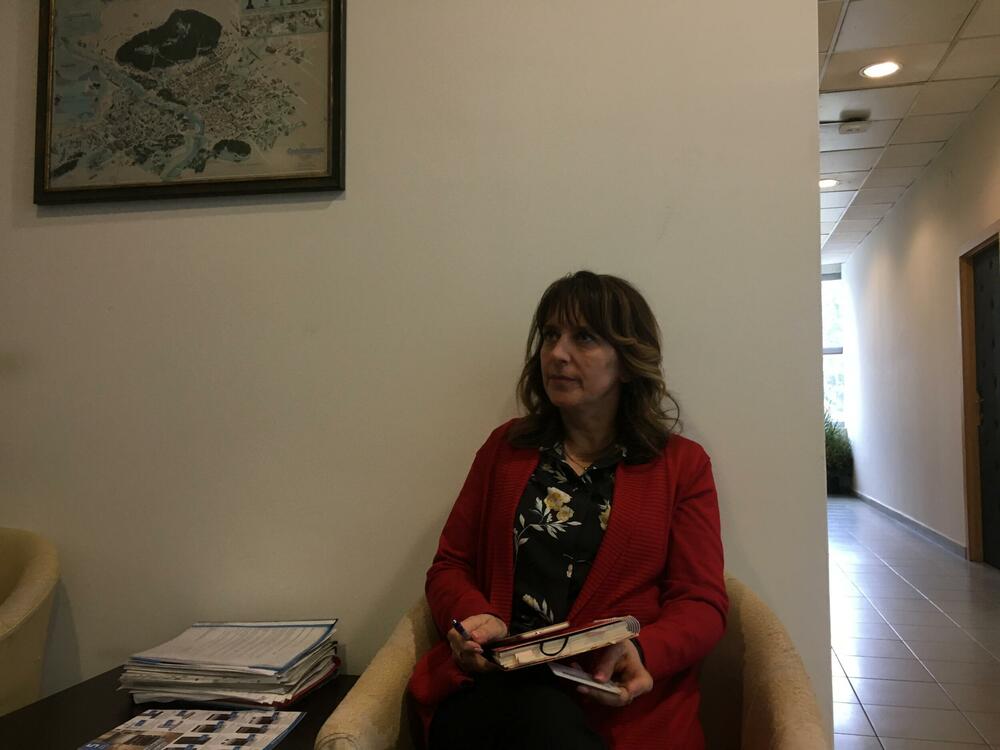
The station from Tivat, she adds, was moved to Kotor precisely because of the cruise ship. She explains that the measuring station measures the main pollutants from road and maritime traffic.
When asked why the measuring station in Kotor was installed only at the end of 2019, he explains that the funds were approved in 2014, but that they received the equipment only in April 2019.
"For the nine stations we currently have just for maintenance, 300.000 euros are needed per year," says Đukanović.
He concludes that the municipalities also failed to carry out local monitoring, and that only Podgorica has a municipal air measurement station.
According to the Air Protection Act, local self-government can monitor air pollution itself.
The municipality of Kotor did not take advantage of this opportunity, and they did not explain why to CIN-CG journalists. The Municipality pointed out that the cruisers that sail into the bay respect international standards regarding inland waters, and the supervision of this is carried out by the Port and navigation safety inspectors.
"Boats must have an international certificate on the prevention of air pollution, engine emissions and a certificate on the characteristics of the propellant," the Kotor Municipality states.
In the Study of the Assessment of the Impact of Residence and Cruise Tourism on the Historic Center of Kotor, which was carried out in 2014, it is stated that tourists from cruise ships stay for about seven hours on average. In 1990, there were only about 11.000 cruise ship passengers, while in 2014 that number grew to as many as 305.000.
"The mass that characterizes cruise tourism (but also excursion tourism - tourists who come on excursion buses and other guests) can cause an increase in noise, crowding, waste, a change in the purpose of business premises...", adds the Municipality.
On the other hand, they point out, that the positive impacts are reflected in revenues from the collection of tourist taxes and port services, consumption in catering and retail establishments.
"Revenues collected by the municipality on this basis have a significant share in the budget, from which funds are allocated for the maintenance and reconstruction of cultural heritage buildings", concludes the Municipality of Kotor.
They did not want to say how much the municipality earns annually from cruise tourism.
On average, there were hundreds of boats and hundreds of thousands of tourists in Kotor every year, until 2020, when the world was affected by the coronavirus pandemic. That year, only nine ships with 3.905 passengers sailed in, while in 2021 that number increased to 64 ships and 9.139 passengers. Yachts and passengers from yachts are included here.
In the report of the Tourist Organization of Kotor (TOK), it is noted that the city, during the intensive stay of cruise ships, faces traffic jams, and that the city's economy relies to a large extent on income from excursion tourism, which squeezes out of the Old Town activities that are necessary for functioning of the domicile population.
The locals we talked to also indicated that due to the increased rent prices, dozens of local businessmen, mostly artisans, have been pushed out of the Old Town, and that they have given way to restaurants and souvenir shops.
The Ministry of Capital Investments (MKI) told CIN-CG that it was announced that about 250 cruise ships will sail into the bay this season, but for questions about the possible limitation of the number of ships that can sail into the bay at the same time and the change of anchorage, they refer us to Port of Kotor, and Port of Kotor on them.
And while the institutions transfer responsibility to each other, apart from the unexamined impact on buildings and air pollution, Montenegro has not yet examined the impact of cruise ships on the marine ecosystem.
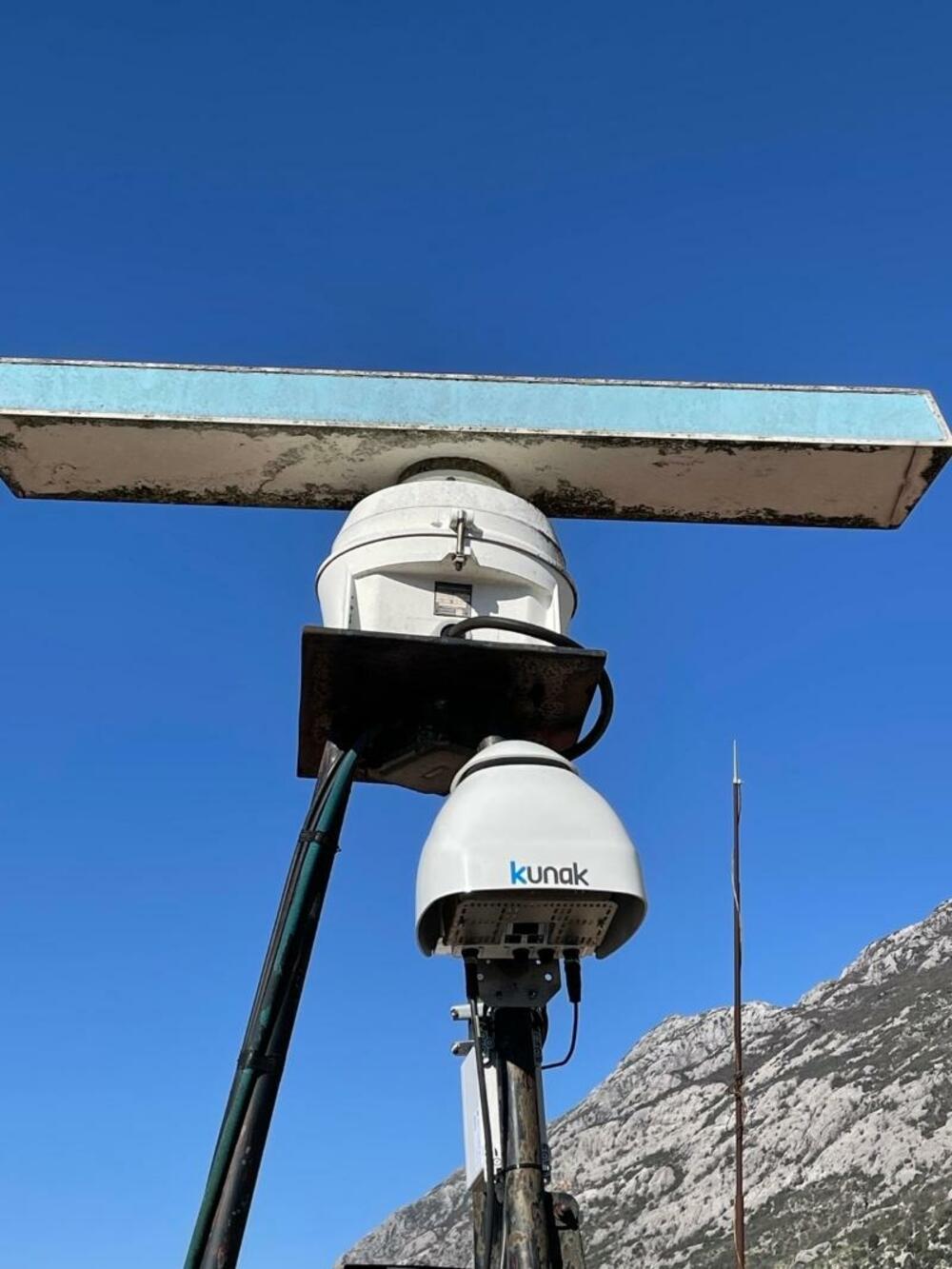
Ballast water from cruise ships can also be a big problem. Director of the Institute of Marine Biology Aleksandar Joksimović he said that it is planned to monitor the impact of cruise ships on the marine ecosystem of Boka. "When it will be approved, we have no information for now," he said briefly for CIN-CG.
The Ministry points out that in this year's budget, certain funds are planned for the preparation of an analysis of the optimization of maritime traffic in the Bay of Kotor in order to improve the safety of maritime navigation and reduce its impact on marine biodiversity and other environmental parameters.
"We believe that a high-quality analysis, as well as the concretization of cooperation between the MKI, the Environmental Protection Agency, the Faculty of Maritime Affairs Kotor and the Port of Kotor, will contribute to the protection of this area", concludes the MKI.
Norway is looking for electric cruisers, Croatia has limited the number
Professor Nikolić points out that in Norway, for Gejrajger Fjord, which is very similar to our bay and also under the protection of UNESCO, their government has determined that cruise ships entering the fjord by 2026 should provide electrically powered ships.
"The problem is to build an electric cruise ship, but cruise ships could be anchored outside that fjord and smaller electric ships could go there. Something like that should be done here as well", said the professor of the Maritime Faculty.
In Dubrovnik, there are systems in the port that monitor pollutants in the air with the arrival and departure of cruise ships, they have limited the number of cruise ships, as well as the place of anchorage... and under the influence of UNESCO, the number of travelers who can visit the city within its ramparts.
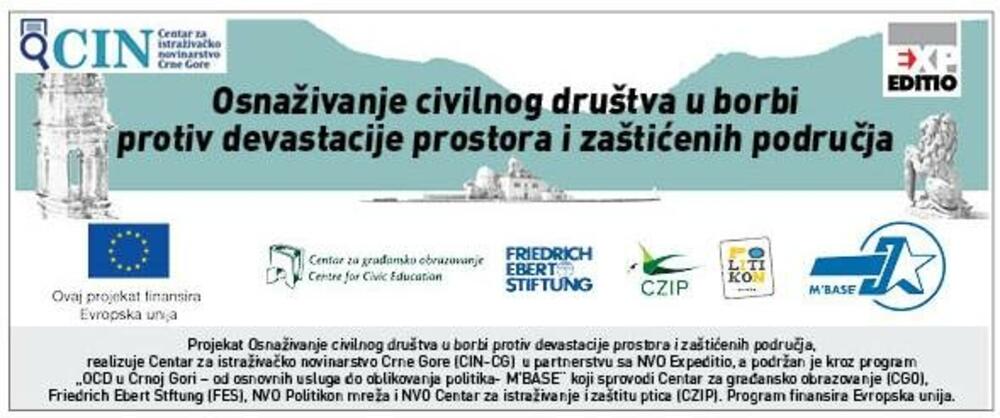
Bonus video:



